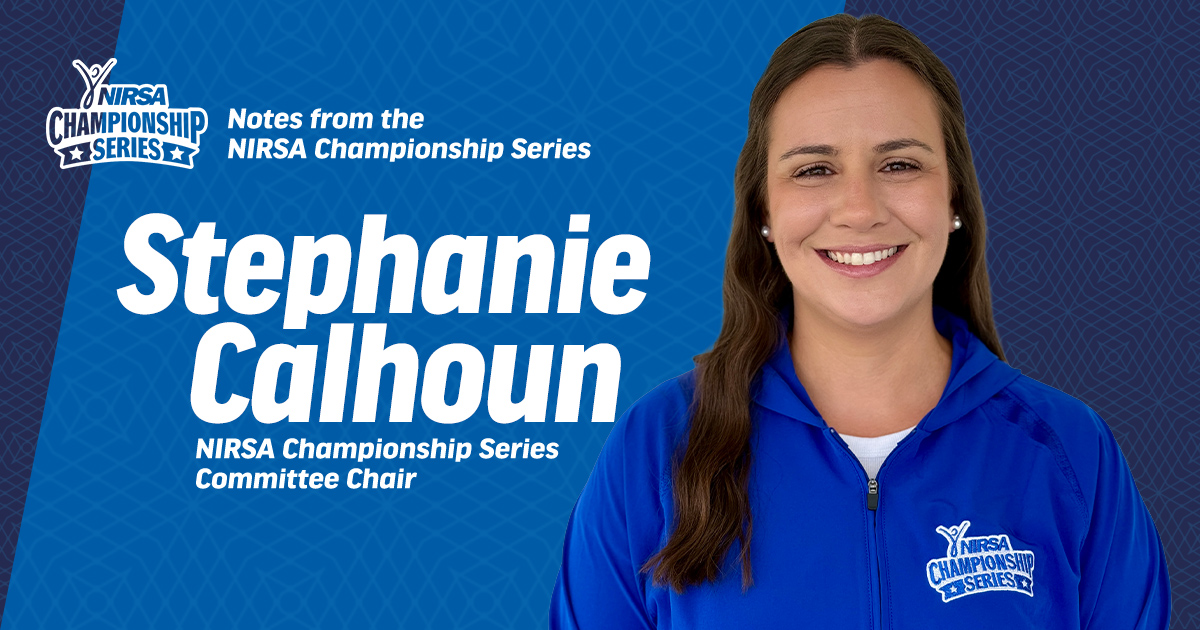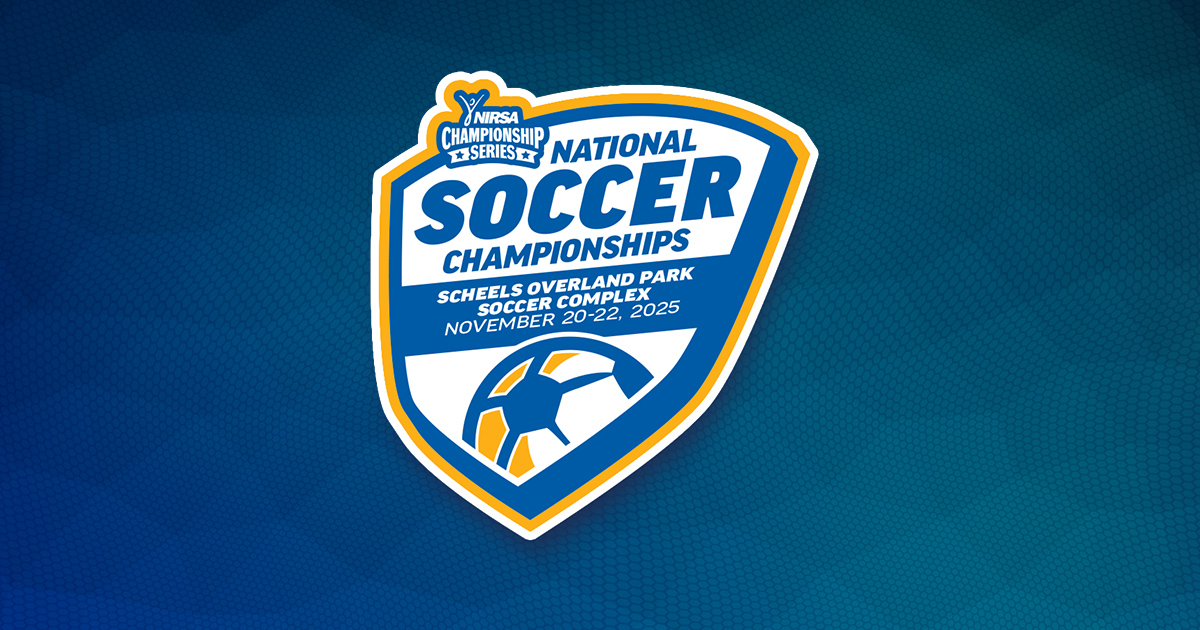It has been an hour since the last awards were handed out. Laptops and clipboards, pylons and down boxes have all been packed away. The sun has set.
Hugs and handshakes have been shared amongst dozens of tournament volunteers. Most attendees of the 2018 NIRSA Flag Football National Championships have filed out of Escambia County Stadium at Ashton Brosnaham Park in Pensacola, Florida.
Tournament Co-Director Jessica Coleman from the University of West Florida strolls across the parking lot to her car. “I’m going to take a nap!” she exclaims to the handful of people remaining.
Jeff Schmitt, Associate Director for Recreation and Wellness at UWF and the Tournament Operations Director, stands on the edge of the parking lot with one last box of supplies to take back to campus. “See you in Boston,” he says to fellow NIRSA members as they load into their cars for the drive home.
A park staff member turns out the stadium lights.
It is just before 6:00pm on Sunday, January 6, 2019 and the end of an era has arrived. After 39 years, the University of West Florida has finished hosting its last extramural flag football tournament.
The school’s first flag football event in 1980 was launched to support a new national extramural tournament that had begun under the direction of Jett Smith at the University of New Orleans in 1979.
“We wanted to have an event that would help feed into the tournament at UNO,” says Bill Healey, longtime Director of Recreation and Wellness at West Florida who has been involved with every flag football event hosted by the school over the past four decades.
Juliette Moore, then UWF’s Assistant Director for Recreation, gathered teams from Pensacola Junior College across town, the University of South Alabama in Mobile, and Florida State University in Tallahassee, to join West Florida for the inaugural tournament. Games were played on the intramural fields, now University Park Field, on the UWF campus.
In 1983, the tournament became the Argo Bowl—Argo short for Argonauts, the UWF mascot. In 1988, Pensacola Junior College, now Pensacola State College, joined as a co-sponsor and the tournament was renamed the UWF/PJC Flag Football Invitational Tournament. In 1991, a Women’s Division was added. In 1995, Co-Rec teams joined the tournament.
The changes produced substantial growth. The tournament began to attract teams from universities, community colleges, and military institutions across the Southeast. From just four local teams in 1980, the annual total topped over 50 collegiate teams by 2000. What was once a single-day tournament for a few dozen participants had become a multi-day, weekend event that brought thousands of visitors to Pensacola. Field space was exhausted on the UWF campus, so the tournament found a new home minutes away at Escambia County’s Ashton Brosnaham Park.
In 2005, West Florida stepped forward to host its first national tournament when its colleagues at the University of New Orleans were unable to coordinate the tournament following the devastation of Hurricane Katrina earlier that year. UWF hosted both regional and national tournaments in 2005 and 2006 before Nationals returned to New Orleans in 2007. However, in 2011, UNO was unable to continue its hosting duties.
“When UNO’s national tournament needed a new home, we jumped at the chance,” admits Bill Healey. “We figured we’d rather be one of two national tournaments than one of over a dozen regionals.”
In 2011, UWF ended its regional tournament and focused solely on the national championship event. Two years later, UWF joined the NIRSA Championship Series when the flag football tournament scene moved back to a single national championship event in 2013.
NIRSA’s Region II, which comprises ten Southeastern states, is full of flag football tournaments with rich histories. Southern Miss completed its 34th year of regional events in 2018. The 31st annual Swamp Bowl at the University of Florida was held last October. UNC Wilmington has hosted tournaments for 27 years. Relative newcomer Western Kentucky University hit 16 years this past fall.
The University of West Florida is by far the leader with 41 extramural flag football tournaments over 39 years—31 regionals and ten nationals. It’s an impressive number for one of the smaller schools in Florida. UWF is the fourth smallest school by student population among the 12 public institutions in the State University System of Florida.
“This tournament has put UWF on the map,” says Jessica Coleman, Assistant Director for Competitive Sports at the school since 2015. “It is an awesome growth experience for our staff. We have been able to attract great graduate assistants who contribute to and learn from this tournament.”
While West Florida may be the tournament host, the UWF staff is quick to acknowledge the vital role that NIRSA member volunteers play in making the tournament a success. For many volunteers, working at Nationals is a chance to give back to the sport or event where they fell in love with the profession.
“Flag football is the reason I’m in rec sports,” says Jeff Schmitt, UWF’s Associate Director of Recreation, who notched his 20th tournament in Pensacola this year. In the 1990s, he officiated at regional tournaments as an official in Eau Claire, Wisconsin, and at his alma mater, the University of Illinois. He was a national tournament official in New Orleans. As a graduate assistant, Jeff worked tournaments at Ohio State University. It was on the tournament circuit that he met many NIRSA colleagues who have become his good friends.
For Jessica, it is her time as a player for UWF’s national championship women’s and co-rec teams from 2005 through 2009 that impacted her collegiate career and her work with the tournament.
“In school, I found playing flag football to be a great way to remain active,” says Jessica. “Through our participation in regional and national tournaments, we got to see new places, enjoy time with friends, and experience great competition.”
Now as Tournament Co-Director, she’s focused her efforts on the participant experience. “Players on our teams have hectic lives,” says Jessica. “We strive to enhance our communication, double checking things often with teams in the weeks leading up to the tournament. The extra effort is worth it to ensure that we have a competitive field of teams.”
In the tournament’s final year, 55 teams competed across four divisions: Men’s, Women’s, Co-Rec, and Open. Fifty tournament staff volunteers and fifty student officials joined the UWF staff to handle all aspects of the tournament from lining fields and scheduling games to keeping stats and evaluating officials, even providing social media and live streaming coverage.
Times have certainly changed since the first tournament in 1980. The university itself has more than doubled in size, from around 5,000 students then to over 13,000 today. UWF participates in NCAA Division II athletics and added varsity football in 2016. The Recreation and Wellness staff contribute time and effort to other local youth sports tournaments in the Pensacola community each year.
Therefore, despite the pride that comes from hosting successful events for participants and NIRSA colleagues every year, the University of West Florida is ready to pass the torch of flag football to a new host. The Round Rock Multipurpose Complex in Texas will be the home for the 2019 National Championships.
So next fall, things will be a bit quieter around the Recreation and Wellness Department Offices at West Florida. And, the staff will have more time to relax over the holidays. But, rest assured you’ll see the Argonaut logo and Argo blue and green shirts on staff, officials, and participants as UWF ventures out to other flag football events across the region and the nation.
David Peters is currently the Associate Director of Campus Recreation at Florida State University. He currently serves as the Voice of the NIRSA Championship Series.






